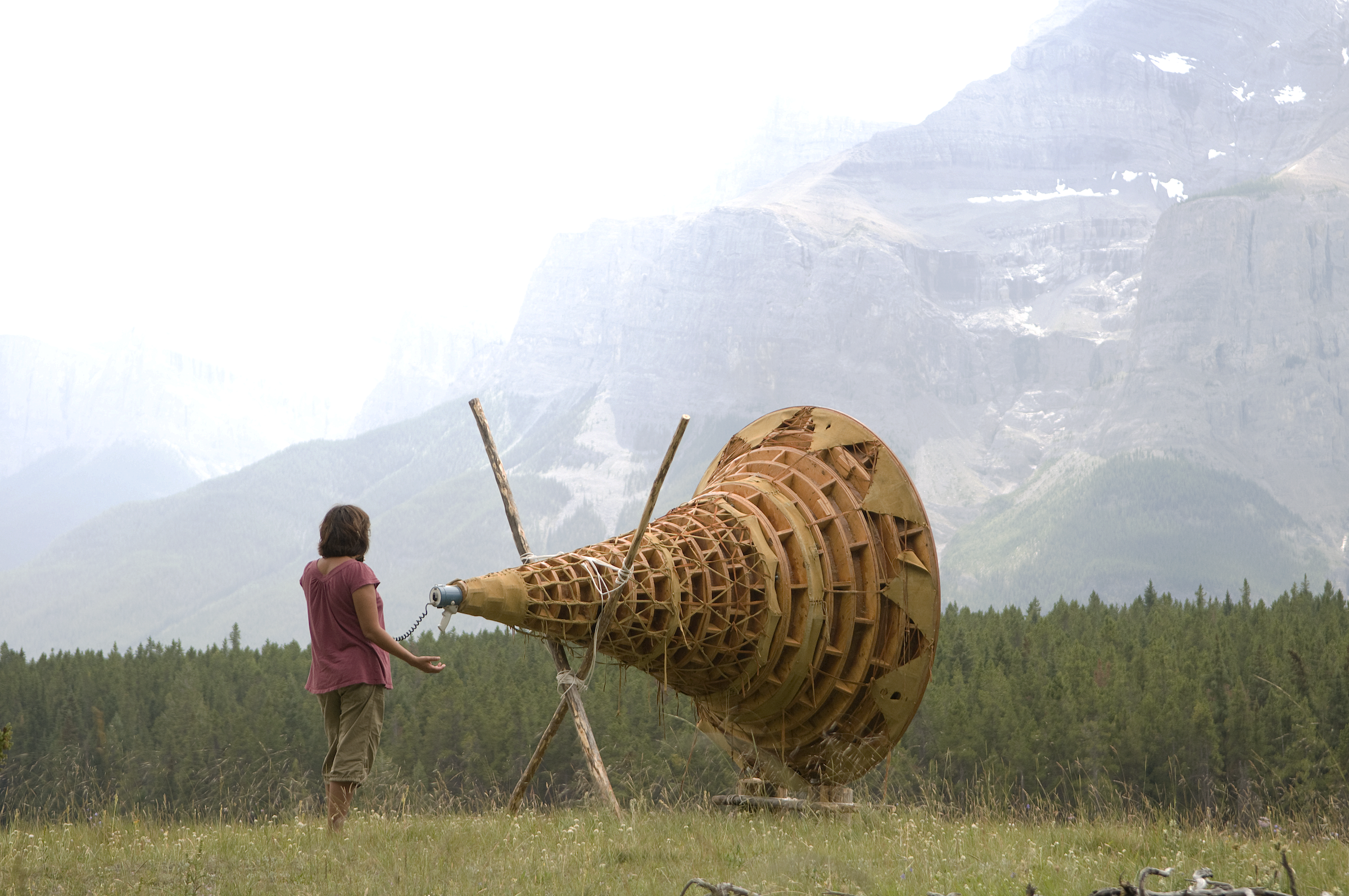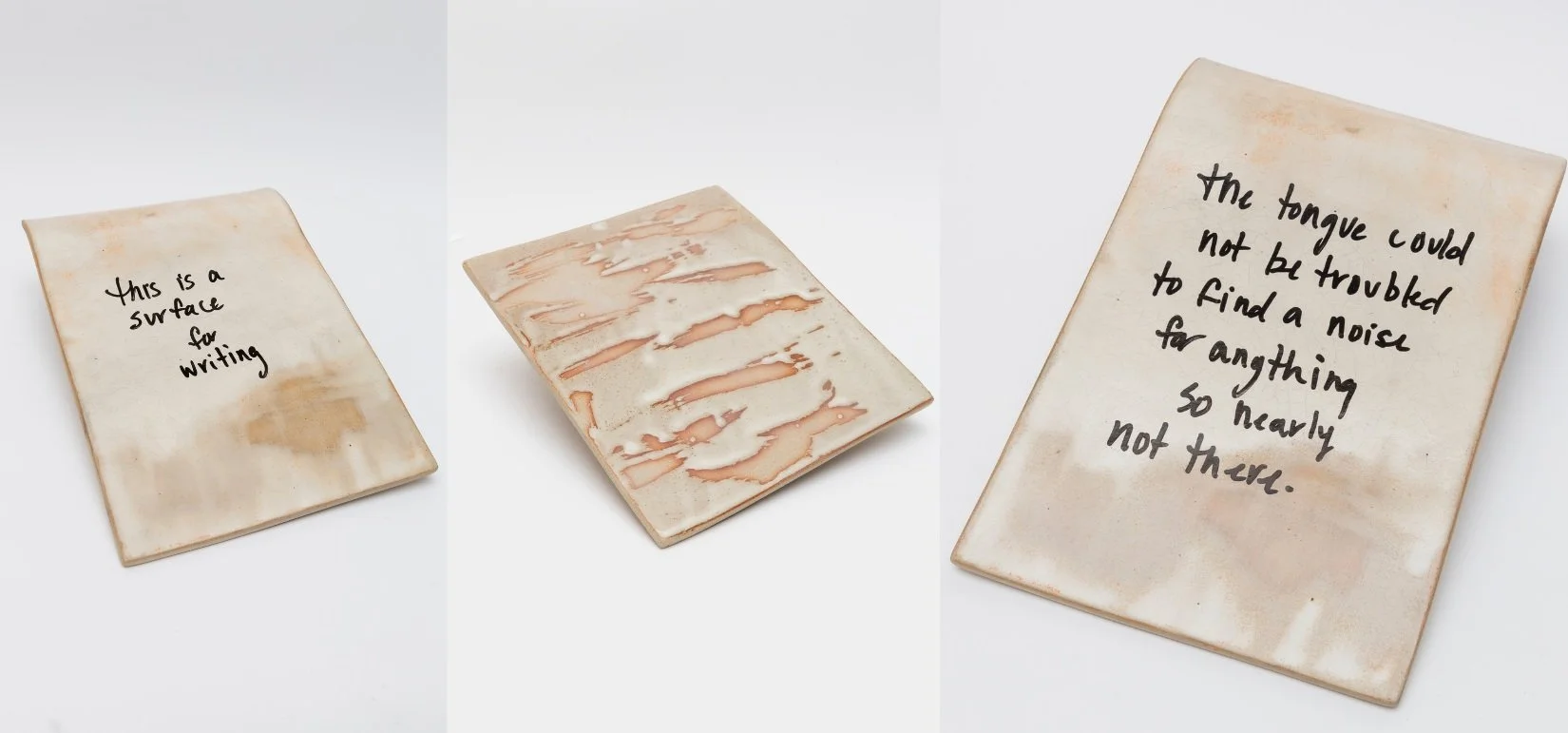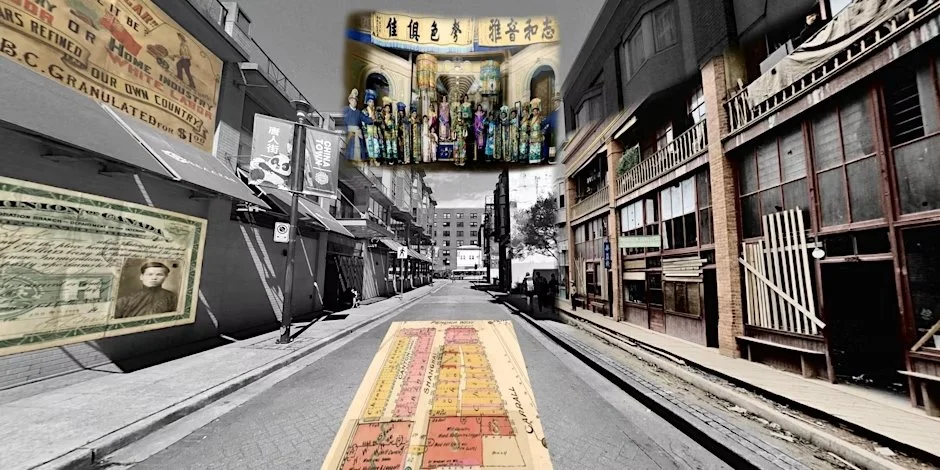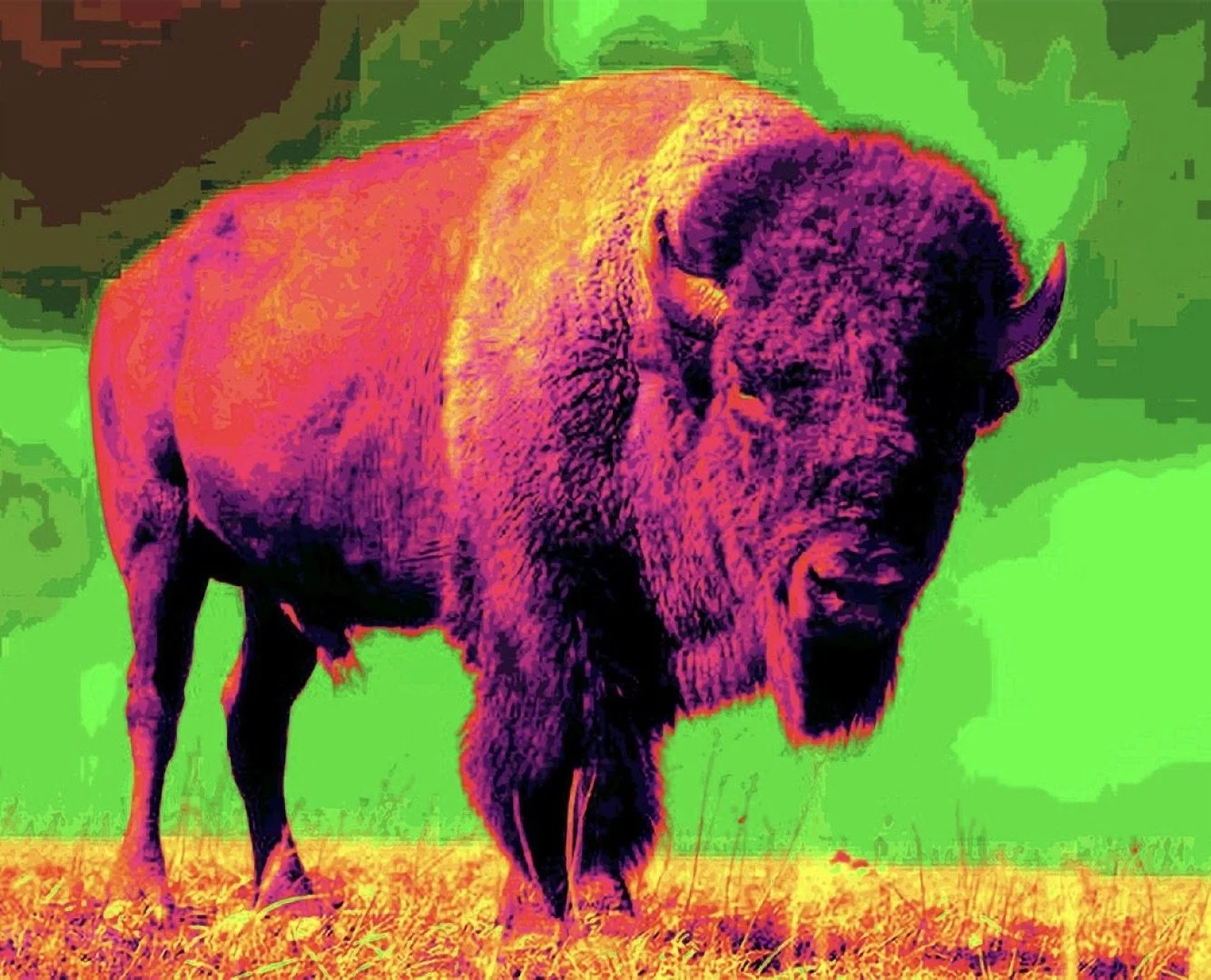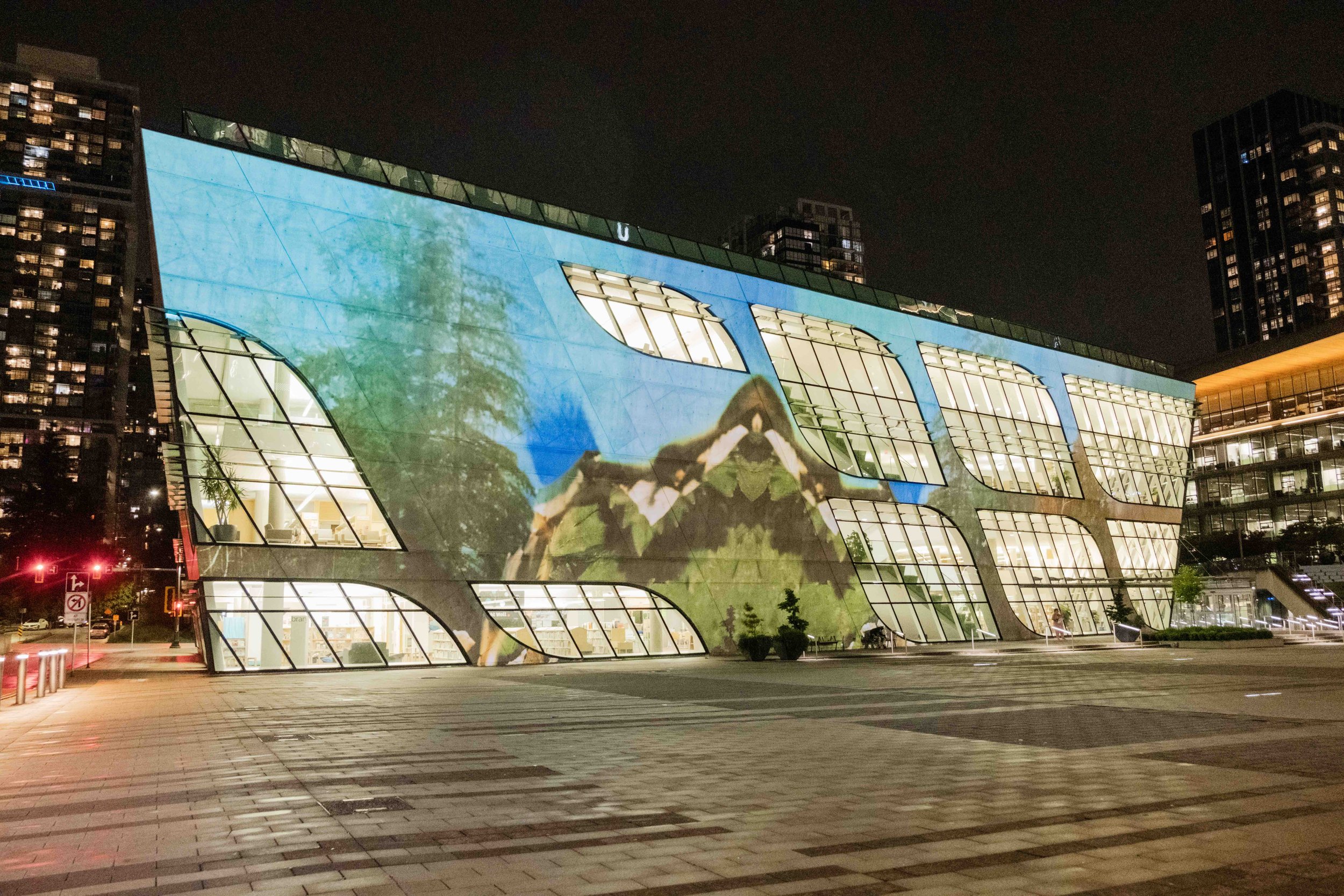Pelts, placards, and megaphones, as VALUE: Rebecca Belmore at the Museum of Anthropology disrupts display spaces
Famous works like Wild and Fountain create conversations about museum collections and the land they sit on
Rebecca Belmore’s Wild, as installed at The Grange. Photo courtesy of the Art Gallery of Ontario
The Museum of Anthropology at UBC presents VALUE: Rebecca Belmore at the Museum of Anthropology to October 19
A GRAND FOUR-POSTER wood bed now sits startlingly amid the centuries-old earthenware of the Museum of Anthropology’s Koerner European Ceramic Gallery.
Called Wild, and created by Vancouver-based Anishinaabe artist Rebecca Belmore, the installation at first appears like an opulent antique furniture piece with a deep-red bedspread—another artifact from the past. But look closer, and you’ll see it’s fringed with long, black hair, beaver pelts lining its canopy.
Wild is, as curator Jeffrey Boone so accurately puts it, “disturbingly beautiful,” instantly alluding to the blood and violence of colonialism. Boone points out that the beaver furs were commodified by colonial governments—the same ones that once offered bounties on the scalps of Indigenous people as an incentive to clear land for settlers.
The effect is haunting, lodged as the bed is amid the ornate homewares of the colonial powers.
“It’s the closest thing to a domestic space in the museum—and she really liked it connected with the domestic pieces,” Boone says of Belmore.
Wild is one of four major works disrupting the museum space in a new exhibition called VALUE: Rebecca Belmore at the Museum of Anthropology. Drawn from various points in her 40-year practice, each alludes to colonial oppression and invisible history, questioning the value of cultural objects in institutions like this one. It’s provocative—from an award-winning senior artist who has long confronted historical bias and the challenges Indigenous people face. Belmore is offering up unexpected jolts of reality—wake-up calls for gallerygoers wandering among artifacts. Simultaneously, it represents a way for a facility focused on the distant past to speak to the here and now.
As Boone, a collector, former gallerist, and UBC master’s student in critical and curatorial studies, puts it: “It’s an invitation to consider the museum as much a part of the exhibition as the artist is.”
Belmore created Wild in 2001 as an installation for the master bedroom of The Grange, the historic original home of the Art Gallery of Ontario—a takeover of a settler residence that harked back to the original inhabitants of the land on which the Toronto landmark sits. Sometimes she would lie in the bed, wordlessly asserting her presence in a performance-art installation that spoke to reclamation, redress, and rewritten histories.
Across the MOA, past the Great Hall’s totem poles and Bill Reid’s The Raven and the First Men, visitors have the chance to take in Belmore’s equally arresting Fountain, created for the Venice Biennale in 2005 and now installed to Belmore’s original specifications in the MOA’s Audain Gallery.
The artist herself appears in the single-channel video that’s projected onto a screen of cascading water. It was filmed on Musqueam territory on Iona Beach, and poses hard questions about natural resources and lost connections to land. In it, Belmore walks away from a fire on a beach and struggles, grunting and gasping, to gather water with a bucket in the sea. When she emerges from the surf, she throws the contents of the pail at the camera lens—but the liquid is now blood-red. The artist catches our gaze as the cascade of water now bleeds.
Rebecca Belmore’s Fountain. Photo courtesy of the Art Gallery of Ontario
“In that jump cut she’s just looking at the viewer, and to me it’s magical,” Boone comments. “You don’t get to escape from the situation. It asks, ‘What are you going to do?’”
The video installation’s constantly flowing, floor-to-ceiling screen of water posed enormous technical challenges at this facility, with its carefully controlled humidity. That engineering feat adds to the multilayered meaning of the piece, as Boone points out in his curator’s statement: “The building, its operations, and its collections have therefore become implicated in the force of this essential element, so close to where the work was filmed 20 years ago.”
Two more recognizable objects of protest round out the quartet of pieces scattered strategically throughout the museum. The placard I AM WORTH MORE THAN ONE MILLION DOLLARS TO MY PEOPLE hails from a real protest Belmore staged around Wild, which she chose to gift to the Vancouver Art Gallery in 2010, rather than sell into the art market. Significantly, the word DOLLARS stands out in blood-red. Belmore was asserting the idea of value beyond her capitalistic, commercial worth as an artist. Made from a rough stick, spray paint, and battered placard, it was acquired by the Morris and Helen Belkin Art Gallery, a fact that’s further complicated by the Plexiglas case that now protects it as a “valuable” art object.
And the MOA awaits the arrival of Ayum-ee-aawach Oomama-mowan: Speaking to Their Mother, a 1991 work that is a giant, working megaphone created in response to the 1990 Oka Crisis, the Kanesatake Resistance movement against a golf course development on Indigenous lands in Oka, Quebec. The next year, Belmore toured the striking, two-metre-wide wood piece across Canada, to a number of sites where Indigenous land claims were being asserted.
Because it’s being used to raise voices at an event in Ottawa, it won’t arrive at the MOA till late July. Boone says it will sit by the MOA’s picturesque reflective pond. Again, as the curator suggests, it engages and implicates the viewer, asking “What would you say to the land?”
In fact all four of Belmore’s pieces sit in close conversation with the precious artifacts that surround them at the MOA. More importantly, says Boone, they put the viewer into the middle of that conversation: “All of the works bring us back to our body in this place.” And, of course, invite us to reconsider what we value. ![]()
Rebecca Belmore’s Ayum-ee-aawach Oomama-mowan: Speaking to their Mother. Photo by Sarah-Ciurysek




